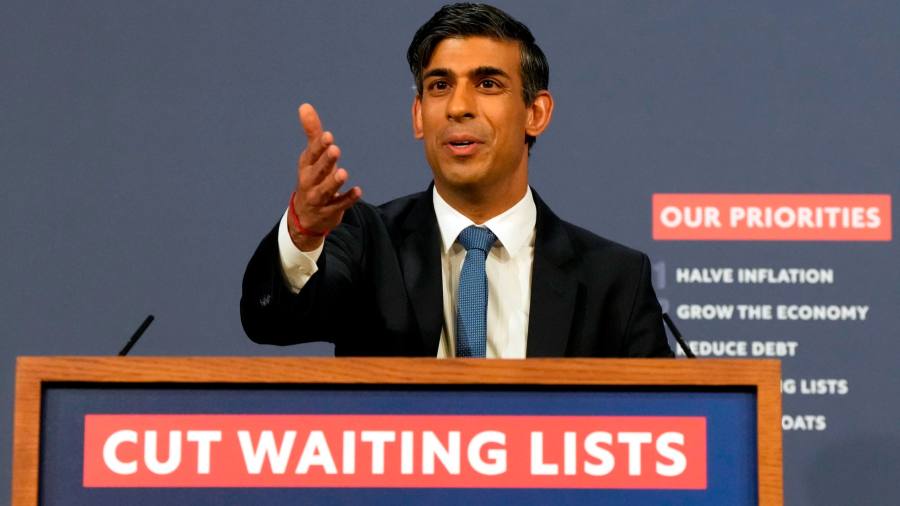
Receive free National Health Service updates
We’ll send you a myFT Daily Digest email rounding up the latest National Health Service news every morning.
Patients will soon see improvements in England’s health service after the release of a 15-year plan to substantially boost staffing levels, the head of the NHS and Rishi Sunak have suggested, citing extra hiring and new and reformed frontline roles starting to have an effect.
The blueprint, published in full on Friday, showed that rises in clinical training places would not be fully implemented until 2031, with the goal of 230,000 more doctors and nurses by 2037.
However, speaking at a joint press conference with the prime minister, NHS chief executive Amanda Pritchard said: “I think there is a lot in this plan that speaks to today.”
Healthcare organisations welcomed the plan’s ambition but said far more detail was needed on how it would be implemented and funded, and claimed targets alone would “not deliver” the necessary staff.
The long-awaited blueprint envisages shortening medical degrees by up to two years and proposes that one in six clinical roles be recruited through apprenticeships, in which trainees will partly learn on the job. The number of “practice hours” a nurse must complete before qualifying could also fall, according to the plan.
“Some of the new roles and the increases in those roles will come on stream much more quickly because the training periods are obviously reduced,” said Pritchard.
Under the plan, 5,000 nurse associates and 1300 physician associates will be trained in 2023-24, along with 3,000 more advanced practitioners. The roles will emphasise “generalist and core skills” needed to care for frail patients, those with multiple different conditions or mental health needs. About 3,000 pharmacists will learn to prescribe medicines for common ailments, easing pressure on clinical staff.
The plan also envisages roughly 130,000 fewer workers leaving the NHS over the next 15 years. The health service employs about 1.4mn people in England but is struggling with 112,000 vacancies and doctors’ strikes.
Sunak highlighted the changes to pharmacies and said GP practices were being given grants to install cloud-based telephony systems to make it easier for patients to contact them, describing them as “things that make a difference in the here and now”.
However Pat Cullen, general secretary of the Royal College of Nursing, whose members this week voted to drop long-running strike action, said the government’s “ambitious numbers” required extra detail. Targets alone would “not deliver the staff” needed to care for patients now, she said.
Dr Latifa Patel, workforce lead at the British Medical Association, the doctors’ union, said people should be under no “illusion” that “a small number of physician associates will make up for the huge shortages of doctors”. She added more clarity was needed on what the associates’ responsibilities would be.
The plan also assumes a rise in the NHS’ productivity by 1.5-2 per cent, although it emphasised that realising this goal would require “continued and sustained investment in NHS infrastructure [and] a significant increase in funding for technology and innovation”.
Social care provision also needs to be strengthened, according to the blueprint, to help ensure the plan is delivered.
The NHS is set to come under enormous pressure next month as junior doctors walk out for five days, their longest-ever stoppage, and consultants strike for 48 hours almost immediately afterwards.
Asked if continued industrial action would hit his goal of cutting patient waiting lists, which stand at 7.4mn for non-urgent hospital care, Sunak said “tak[ing] an easy route” by offering higher pay rises would cause inflation to stay higher for longer.